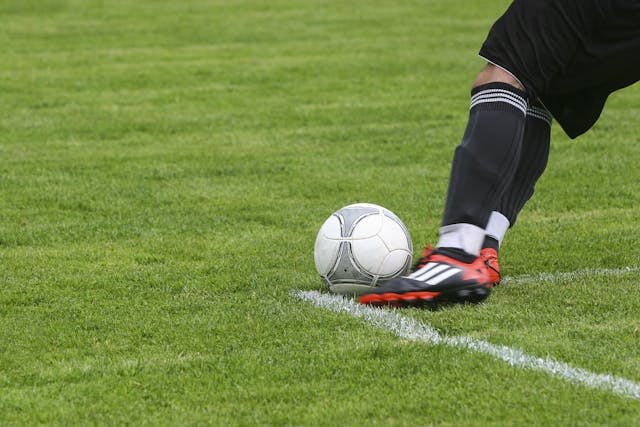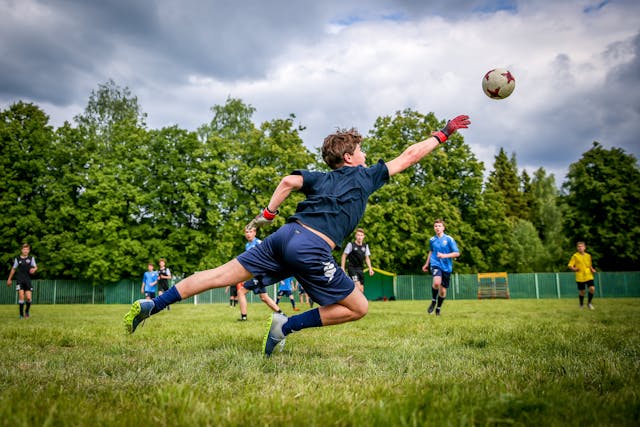Whether you call it soccer or football, the hype for the sport is equal across the globe. The simplicity of the equipment and its accessibility make it attractive to millions. However, for those who are newly introduced to the sport, one of the most common questions one might ask is, “How many players are on a soccer field?”
This happens to be one of the most basic elements, and understanding it is key to fully appreciating the game.
In this article, we will answer the basic questions, examine the players on the pitch and their separate roles, examine the game from various perspectives—from youth soccer to match officials—and even understand modern technologies such as VAR.
Key Highlights
- Typically, Soccer matches are played in an 11-player format. This means that 11 players from each team play on the field.
- The 11 players are divided into four basic roles: goalkeeper, defender, midfielder, and striker or forward.
- Seven players stay as bench substitutes and switch with the remaining 11 players on the field during match.
Knowing the Basics: How Many Players on a Soccer Field?

Soccer has 11 players playing on the field. Hence in a soccer match, there are total 22 players present, 11 from each team. The members of each team are divided into various positions with different roles.
Now let’s break down these roles and the varied positions in the field.
The Basic Positions in Soccer
There are four basic positions available in soccer: goalkeepers, defenders, midfielders, and forwards. Each position of a player in the field is unique and important in a match; no player is less valuable than the other.
1. Goalie

Each team has a single goalie, a specialized player on the field. The goalkeeper’s responsibility is not to let the other team score. Only such a player is permitted to use hands, but only within the penalty area.
Lastly, to minimize some confusion, the goalkeepers have different colored shirts from their fellow team players. This applies to their shirt, shorts, and socks; this does help the referee and the players to easily recognize them in the game.
Curious to learn more about Maradona’s controversial 1986 World Cup goal? Click here to dive into the full story behind this iconic moment.
2. Defenders

The defenders are those who play in front of the goalkeeper to protect his team’s goal. A soccer team consists, normally, of four defenders, organized into two very specific key positions :
- Center-backs are usually inside defense with the objective of blunting the strong attacks their opponents enjoy in the middle ground.
- Full-backs guard the sides of the field, from which opponents may attack down the flanks.
The defenders perform in unison, protecting shots, interceptions, and tackles which prevent the ball from reaching scoring positions.
3. Midfielders

These players are located behind the defenders and forwards but in a delicate position to affect both defense and attack. A team takes three to five midfielders according to the formation they are adopting. They dictate the control of the game, distribute the ball, and support the attack and defense.
Midfielders are generally in charge of the passing from defense to offense because they can often be on the border between these two stages of the game.
4. Forward

Forwards or more commonly known as strikers, are basically the game’s natural goalscorers. They play in the attacking third of the field all the time seeking to create and convert a goal-scoring opportunity. Depending on the chosen formation, there can be one or two central forwards.
This is especially the case when using wingers, who play wider on the field. Wingers stretch the opponent’s defense by his speed and dribbling ability, allowing him to cross balls from outside the center line into the central forwards.
Want to relive the excitement of soccer’s most legendary video games? Click here to explore the games that have shaped the sport’s virtual world.
Beyond the 11 Players: Substitutes and Bench Players
In soccer, a team can reserve seven bench substitutes to sit on the sideline while only 11 can be on the field. They can be substituted in for worn out, injured, or simply as a tactical move in changing strategy by the coach.
Substitution is also league or competition-specific. For example, in international games, there are five substitutes allowed in a game. Substitutes provide new zeal and although it is minute at first, surely gives the team much needed momentum in the last minutes of a game.
Youth Soccer Variations: Few players, Reduced Size Fields

It should be noted that the number of players on a soccer field varies sometimes depending on the age group, since more often than not, youth soccer has fewer players. Younger age groups usually adopt smaller fields with 5-7 players a side where the kids learn the game.
This is because the game tends to become friendly for young players, hence enabling them to enjoy while striving to understand the basic concepts of soccer. With time, more and more players will be added alongside the toughness of the game as the children grow and improve.
Match officials: Crucial Players, Crucial Trainers

Alongside the players, any game of football requires a set of match officials to put the rules governing the game into practice on the pitch. The minimum number of match officials in any standard match will be a referee and two linesmen or assistant referees.
Referee
The referee has the highest status in that field, for it is he who enforces the rules and manages the players’ behavior, while his decisive decisions will further bring about the game as a whole. He can give yellow and red cards to players for their misconduct.
Assistant Referees (Linesmen)
The assistant referees stand along the sidelines to help the actual referee by making the right decisions. For example, they will call offsides and signal that the ball is out of play. Their role simply involves providing a second set of eyes that ensure justice is observed during the game.
VAR: Innovation In Modern Football
This is a fairly new innovation in the sports world where video review technology is employed to correct clear and obvious mistakes made by the on-field referee. Primarily, VARs are used when reviewing critical decisions such as goals, penalties, or red cards to ensure that a fair decision is made with reasonable accuracy.
Wonder which football leagues made the cut this year? Check out the top 10 football leagues in the world for 2024 and see how your favorite ranks!
Conclusion
Well, you could call yourself a football amateur now! You know the basics of the field, and after watching a few matches would be able to differentiate between the various positions of players on the field. Football is an amazing sport, and the more you get engrossed in it, the more you will understand that it shows great sportsmanship.
So whether you’ve switched on an 11-player League game, or are watching youth soccer on the field, you will be able to form a deeper appreciation for the game.

